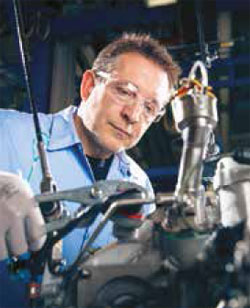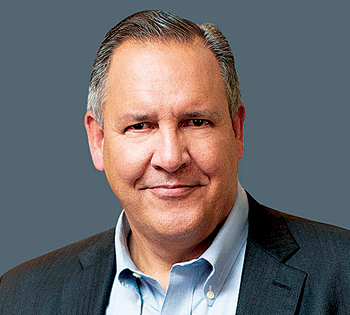INDIAN ARMED FORCES CHIEFS ON
OUR RELENTLESS AND FOCUSED PUBLISHING EFFORTS

SP Guide Publications puts forth a well compiled articulation of issues, pursuits and accomplishments of the Indian Army, over the years

I am confident that SP Guide Publications would continue to inform, inspire and influence.

My compliments to SP Guide Publications for informative and credible reportage on contemporary aerospace issues over the past six decades.
Raytheon & UTC Come Together to Create Raytheon Technologies
Raytheon & United Technologies Corporation consolidate in one of the largest mergers in the history of aerospace world to create world’s most advanced aerospace and defence systems provider. With the advent of Raytheon Technologies Corporation, as a result of this merger, exciting times await the defence and aerospace industry.

We are currently living in extremely uncertain and challenging times. The global situation due to the COVID-19 pandemic is taking a toll on all the industries of which aviation and aerospace are among the most affected. While the recovery situation might also be pointing towards an unpredictable timeline, the industry is constantly working on penning down practical solutions. A ray of positivity and enthusiasm also came from one of the biggest merger of the aerospace industry. This instance reinstated how mergers, acquisitions and collaborative steps are a fundamental part of the industry.
On April 03, 2020, the successful completion of the all-stock merger of equals transaction between Raytheon Company and United Technologies Corporation (UTC) was announced by Raytheon Technologies Corporation. The much anticipated merger has come following the completion by UTC of its previously announced spin-offs of its Carrier and Otis businesses, the two non-aerospace and non-defence businesses.
Immediately prior to the closing of the merger, UTC put into effect change of its Otis and Carrier businesses into separate publicly-traded companies. The company mentioned in its press release that Carrier will trade under the ticker symbol “CARR” on the New York Stock Exchange (NYSE) and Otis will trade under the ticker symbol “OTIS” on the NYSE. UTC shareowners will receive 0.5 of a share of Otis and one share of Carrier for each share of UTC common stock held.
This merger is likely to serve customers worldwide through a platform-agnostic, diversified portfolio of industry-leading businesses, Raytheon highlighted. This coming together of UTC, which is left with Collins Aerospace, engine maker Pratt & Whitney and Raytheon, has brought a behemoth into being.
“Raytheon Technologies brings together two companies with combined strengths and capabilities that make us uniquely equipped to support our customers and partners during this unprecedented time. We will also play our part in the war on the COVID-19 pandemic, including doing everything we can to keep our employees around the globe safe and well,” — Gregory J. Hayes, CEO of Raytheon Technologies
With approximately $74 billion in pro forma 2019 net sales and a global team of 195,000 employees, including 60,000 engineers and scientists, it is well established that Raytheon Technologies is one of the largest aerospace and defence companies in the world.
“Raytheon Technologies brings together two companies with combined strengths and capabilities that make us uniquely equipped to support our customers and partners during this unprecedented time. We will also play our part in the war on the COVID-19 pandemic, including doing everything we can to keep our employees around the globe safe and well”, remarked Greg Hayes, CEO of Raytheon Technologies. “As we move forward, Raytheon Technologies will define the future of aerospace and defence through our focus on innovation, our world-class people and our financial and operational strength to create long-term value for our customers and shareowners.”
Raytheon Technologies ensured that it has a large and talented workforce to address the rapidly evolving needs of customers across the world. The combined company expects to introduce breakthrough technologies at an accelerated pace across high-value areas such as hypersonics, directed energy, avionics and cyber security. In addition, Raytheon Technologies has a strong balance sheet and cash flows to support critical business initiatives, including company and customer-funded Research and Development.
“Today, we introduce Raytheon Technologies as an innovation powerhouse that will deliver advanced technologies that push the boundaries of known science,” said Tom Kennedy, Executive Chairman of Raytheon Technologies. “Our platform-agnostic, diversified portfolio brings together the best of commercial and military technology, enabling the creation of new opportunities across aerospace and defence for decades to come.”
During the week before the merger, Raytheon and UTC had informed that they received all regulatory approvals for their merger, overcoming a last minute hold up by the US government as well, which required them to divest other assets prior to merging. Raytheon had to agree to divest its military airborne radios business, while UTC needed to agree to sell its GPS and space optical businesses. Those spinoffs “are all expected to be completed following the merger”, the companies said on March 30, 2020.
“We are pleased to have received all the necessary regulatory approvals, which clears the way for the successful completion of our merger of equals,” said Kennedy. “We are more than just two businesses coming together - Raytheon Technologies will be uniquely positioned to deliver advanced and innovative solutions to our customers while delivering significant value to shareowners.”
The regulatory process required the disinvestment of Raytheon’s military airborne radios business and UTC’s military Global Positioning System (GPS) and Space Optical Systems businesses, which were all completed following the merger.
STRUCTURE & LEADERSHIP
Following this colossal merger, Raytheon Technologies now has four market-leading segments focused on high-priority areas for customers. These four segments include:

- COLLINS AEROSPACE specialises in aero-structures, avionics, interiors, mechanical systems, mission systems and power controls that serve customers across the commercial, regional, business aviation and military sectors. With approximately $26 billion in 2019 net sales, the segment is headquartered in Charlotte, North Carolina. This is led by President Stephen Timm.
- PRATT & WHITNEY designs, manufactures and services the world’s most advanced aircraft engines and auxiliary power systems for commercial, military and business aircraft. With approximately $21 billion in 2019 net sales, the segment is headquartered in East Hartford, Connecticut and is led by President Chris Calio.
- RAYTHEON INTELLIGENCE & SPACE specialises in developing advanced sensors, training, cyber and software solutions, delivering the disruptive technologies its customers need to succeed in any domain, against any challenge. With approximately $15 billion in pro forma 2019 net sales, the segment is headquartered in Arlington, Virginia and is led by led by President Roy Azevedo.
- RAYTHEON MISSILES & DEFENCE provides the industry’s most advanced end-to-end solutions to detect, track and engage threats. With approximately $16 billion in pro forma 2019 net sales, the segment is headquartered in Tucson, Arizona and is led by President Wes Kremer.
“We are excited about the future of Raytheon Technologies. I am exceptionally proud to lead this new organisation and the talented people who serve our nation, its allies and our commercial aerospace customers so well,” said Greg Hayes. “I also want to thank both the Raytheon and UTC teams who have worked tirelessly to complete the merger and integration work and to stand up both Carrier and Otis as independent public companies, creating three world class organisations.”
The company also pointed out in its release that the shares of Raytheon Company had ceased trading prior to the market opening on April 03, 2020, and each share of Raytheon common stock had been converted in the merger into the right to receive 2.3348 shares of UTC common stock. After closing of the merger, the name of UTC was changed to “Raytheon Technologies Corporation,” and its shares of common stock had started to trade on the NYSE under the ticker symbol “RTX.”
It was also stated that the shareowners of UTC will continue to hold their shares of UTC common stock, which now constitute shares of common stock of Raytheon Technologies Corporation.
As they embarked on this new mission in aerospace and defence, UTC stated on its social media page regarding this merger on the day of the announcement, “Two companies that have changed the course of history come together today to form an innovation powerhouse. Now is the time. Now, we are Raytheon Technologies.”
UTC traces backs its history as United Aircraft after the government in 1934 forced the breakup of a trust that included Boeing and United Airlines. Post that, it became a multi-industry conglomerate under CEO Harry Gray in the 1970s and now under Greg Hayes it seems to be returning to its roots in aviation. In 2018 as well, UTC’s acquisition of Rockwell Collins was among the largest acquisitions and mergers in the history of aerospace industry, bringing together Rockwell Collins along with UTC Aerospace Systems to create Collins Aerospace Systems.
With approximately $74 billion in pro forma 2019 net sales and a global team of 195,000 employees, including 60,000 engineers and scientists, it is well established that Raytheon Technologies is one of the largest aerospace and defence companies in the world
Raytheon’s history however, goes back to the dawn of home radio in the 1920s and it too grew into an industrial conglomerate before expanding in defence at the end of the Cold War. Its defence portfolio eventually included the products of such legendary military contractors as Hughes Aircraft and E-Systems, while its commercial lines were sold off.
Now combined together, Raytheon Technologies is focused on many commercial, industrial and military markets, with Collins Aerospace Systems supplying avionics solutions, Pratt & Whitney a supplier of aircraft engines and power systems, Raytheon Intelligence & Space developing advanced sensors and Raytheon Missiles & Defence providing end-to-end systems solutions to detect, track, and engage threats. Through this new enterprise, Raytheon Technologies is expected to transform the aerospace and defence landscape and rise to become a dominant global supplier to military, commercial and civil customers despite the current scenario.
As the CEO of Raytheon Technologies, Greg Hayes addressed the employees of the company in a letter with respect to the present scenario. He pointed out that the impact of the COVID-19 pandemic on the health of the global economy has been swift and unprecedented. With no industry virtually untouched, commercial aerospace has been particularly hard hit.
“As we work through this crisis, we can be confident that our global team, our partners and our communities will emerge stronger. Our business and the commercial aerospace industry will once again thrive. Raytheon Technologies is a diversified aerospace business with the scale and operational strength to adapt in these challenging economic times. As one company, we are stronger together,” Hayes stated.






